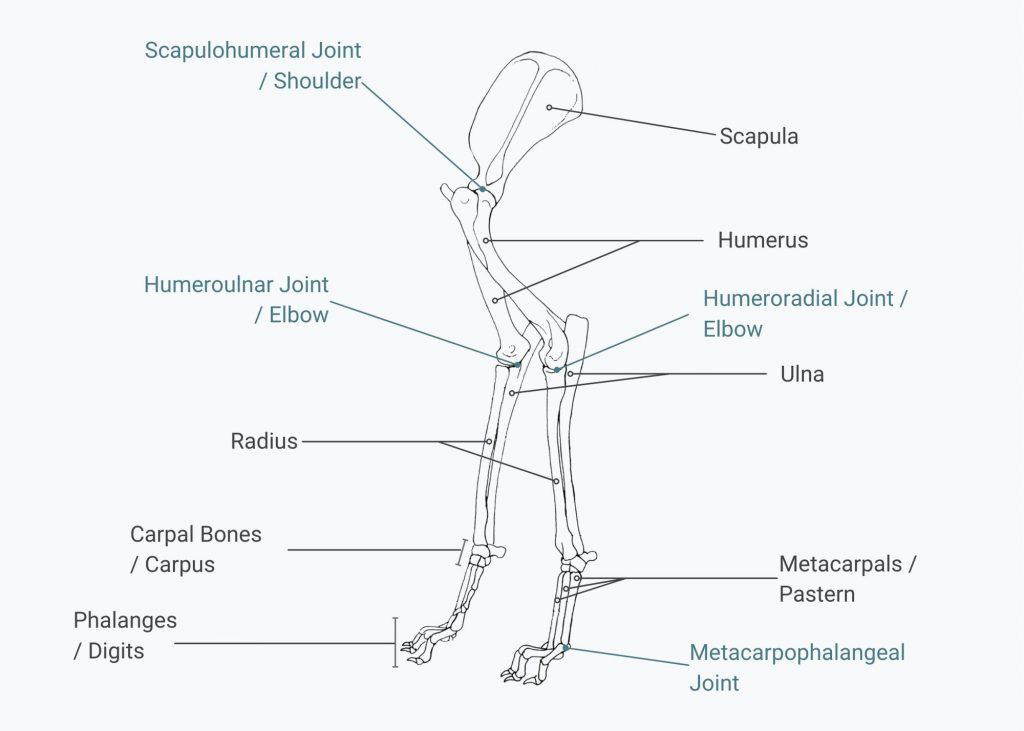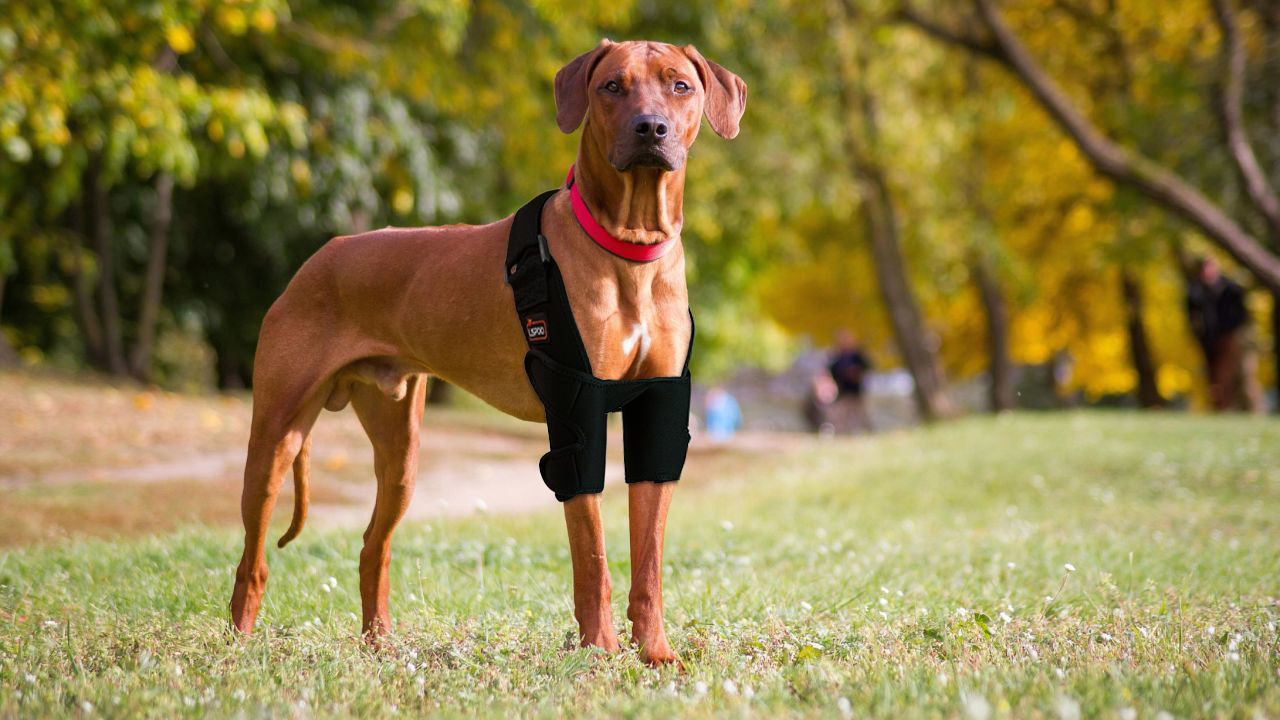Where is my dog’s elbow?
A dog’s elbow is the second joint in the front limb, below the shoulder joint, and is found on the back of the front leg. A dog’s elbow is comprised of three bones, the humorous and the radius. When functioning correctly, a dog’s elbow allows for natural movement and range of motion in the front leg.

How can an elbow brace help my dog?
Elbow Brace for dog with elbow dysplasia
Canine ligament injuries occur when a tendon is overstretched or twisted. Although tendon tears are more common in a dog’s knee, they can also occur in the elbow. Supporting the elbow with a custom brace alleviates joint pain and protects the elbow from further injury as it heals. The elbow orthosis provides both medial and lateral stability to the upper arm.
In addition, the elbow brace prevents the dog from putting too much pressure on its injured elbow and keeps the forelimb in optimal alignment. Along with the injury, a front leg brace can also be for dogs dealing with joint pain from a degenerative joint condition or osteoarthritis.
Types of dog elbow problems:
Elbow dysplasia
Arthritis.
Elbow joint instability.
Elbow luxation.
Degenerative Joint Disease (DJD).
Dogs with arthritis or dysplasia should maintain a healthy weight. Obesity will further strain a dog’s front legs and worsen joint pain. In addition, dogs place most of their weight on their front limbs, meaning their elbows and shoulders take a lot of wear and tear, which is why choosing the right orthotic brace for your dog is crucial.
Dog elbow brace
When should I consider using an elbow brace for my dog?
Elbow brace for canine dysplasia
Your veterinarian may recommend an elbow brace if your dog shows signs of an elbow injury.
Elbow injury signs include:
Limping or lifting the front leg off the ground while walking.
Joint stiffness, especially after a long walk or playtime.
Elbow appears swollen and sensitive to touch.
If dislocated, the dog may not be able to bear any weight on the injured leg.
Dog shows a reluctance to walk or exercise.
By supporting the elbow joint, the risk of hyperextension, dislocation of the elbow is reduced, and the front leg can be better stabilized allowing the dog to return to daily activities. With loose elbow joints, the LISPOO Dog Elbow Braces are designed to provide medial and lateral stability. And improve the dog's flexibility and sufficient freedom of movement.
Helping your dog heal from an elbow joint injury
The carpal hyperextension dog brace is just one part of your dog's recovery. Contrary to popular belief, dogs don’t distribute their weight evenly across all four legs. Instead, the front legs, carpal, elbow, and shoulder joints support 60% of a dog’s total weight. Therefore, for severe elbow injuries and joint pain, it may also be necessary to find a safe way to support the front of your dog.
Common reasons why a dog may need an elbow brace include:
Severe Osteoarthritis (OA)
Injury from a trauma
Ligament laxity
Disease
At times, the custom elbow brace can be attached to the carpal brace to provide ultimate stability from elbow to paw.
Rehabilitation
Along with bracing, rehab therapies are beneficial for dogs with elbow dysplasia. Massage and hydrotherapy are just a few techniques that may be used for a pet with elbow issues. An underwater treadmill and swim therapy work to strengthen the front leg muscles with lower pain and less stress on the elbows. Strengthening the muscles around the elbow joint will help lessen the overall elbow pain. A dog wrist support may be worn during treatments to limit joint pain as the dog moves.
Product Links:LISPOO Dog Elbow Braces For Offers Elbow Support And Protection
Product Category: Knee Brace For Dogs




0 Comments